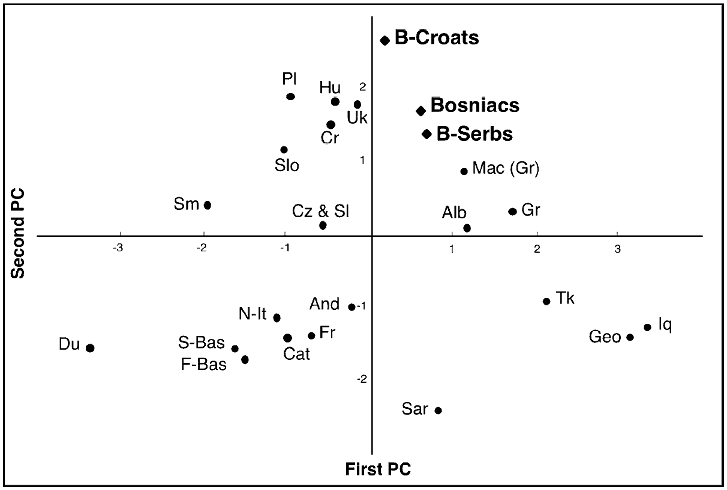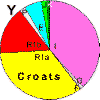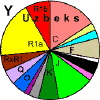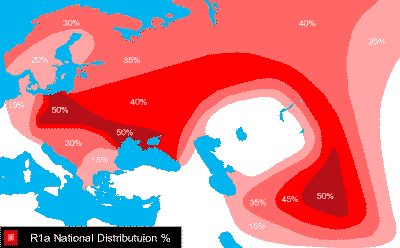Besenyo - Kangar - Croat Genetics
PHYLOGENY OF Y-CHROMOSOME HAPLOGROUPS
AND THEIR FREQUENCIES IN CROATS, SERBS, AND BOSNIACS
2005
Introduction
How to take a peek at people that dissolved 800 years ago? One way is to follow the genes. Bajanaks-Besenyos-Kangars left us few traces of their former glory, one of them is the "Bosnia" country-name, and "Bosniacs" people. The other country-name and ethnonym is Croat, self-name Harvat ("Charvat" with Greek flavor), that happened to be phonetically identical with the Besenyo tribal name Charaboi mentioned by Constantine Porphyrogenitus in "De Administrando Imperio" (ca 950). The other component of the union known as Besenyos were three tribes of Kangars, undoubtedly initially genetically different from their Besenyo marital partners due to incest law, but eventually blended together. And one parameter that can be looked at is, considering a millennia of joint life and extensive leveling of the differences between these migrant populations, what are the differences that tell apart these ethnic conglomerates of native Illyrians, and migrant Slavs and Türks? Genetically, these are the distinct markers that were contributed to the genetic pool of the neighboring people, the markers that find a highest expression in one group and are diluted in others. The study allows a peek into distinct genetic make-up that unites and distinguishes Bosnian Croats, Bosnian Serbs, Bosniacs, Ukrainians, Croats, and Hungarians from Czechs and other Slavic populations.
Links
PHYLOGENY OF Y-CHROMOSOME HAPLOGROUPS
AND THEIR FREQUENCIES IN CROATS, SERBS, AND BOSNIACS
2005
These are papas
in Croats, Serbs, and Bosniaks of modern Bosnia-Herzegovina

Figure 3. PC analysis performed using the frequencies of the Y-chromosome
haplogroups
E-M35, J1, J2, G, I* ,
I-P37* , I-M26, I-M223, I-M253, R-M17 and R-M269
in the three Bosnian groups (present
paper), and in other European populations.

The data from the additional European populations (Alb = Albanians, And = Andalusians,
F-Bas = French Basques,
S–Bas = Spanish Basques, Cat = Catalans, Cr = Croats of Croatia, Cz & Sl = Czechoslovaks,
Du = Dutch,
Fr = French, Hu = Hungarians, Geo = Georgians, Gr = Greeks, Mac (Gr) = Macedonian Greeks,
Iq = Iraqis,
N-It = North Italians, Pl = Poles, Sar = Sardinians, Slo = Slovenians, Sm = Saami, Tk =
Turks, Uk = Ukrainians) (Knowing that Charaboi - Charvat - Harvat
- Croat are descendents of Central Asian Kangars and Besenyo, the selection of
reference populations is way peculiar, with no Central Asian people compared)
are from Semino et al.(2000), Rootsi et al. (2004), and unpublished data. On the whole,
41% of the total variance is represented: 22% by the first PC and 19% by the second PC.
For detail affiliation of various haplogroups, and the author's interpretation of the results, please refer to the source article.






